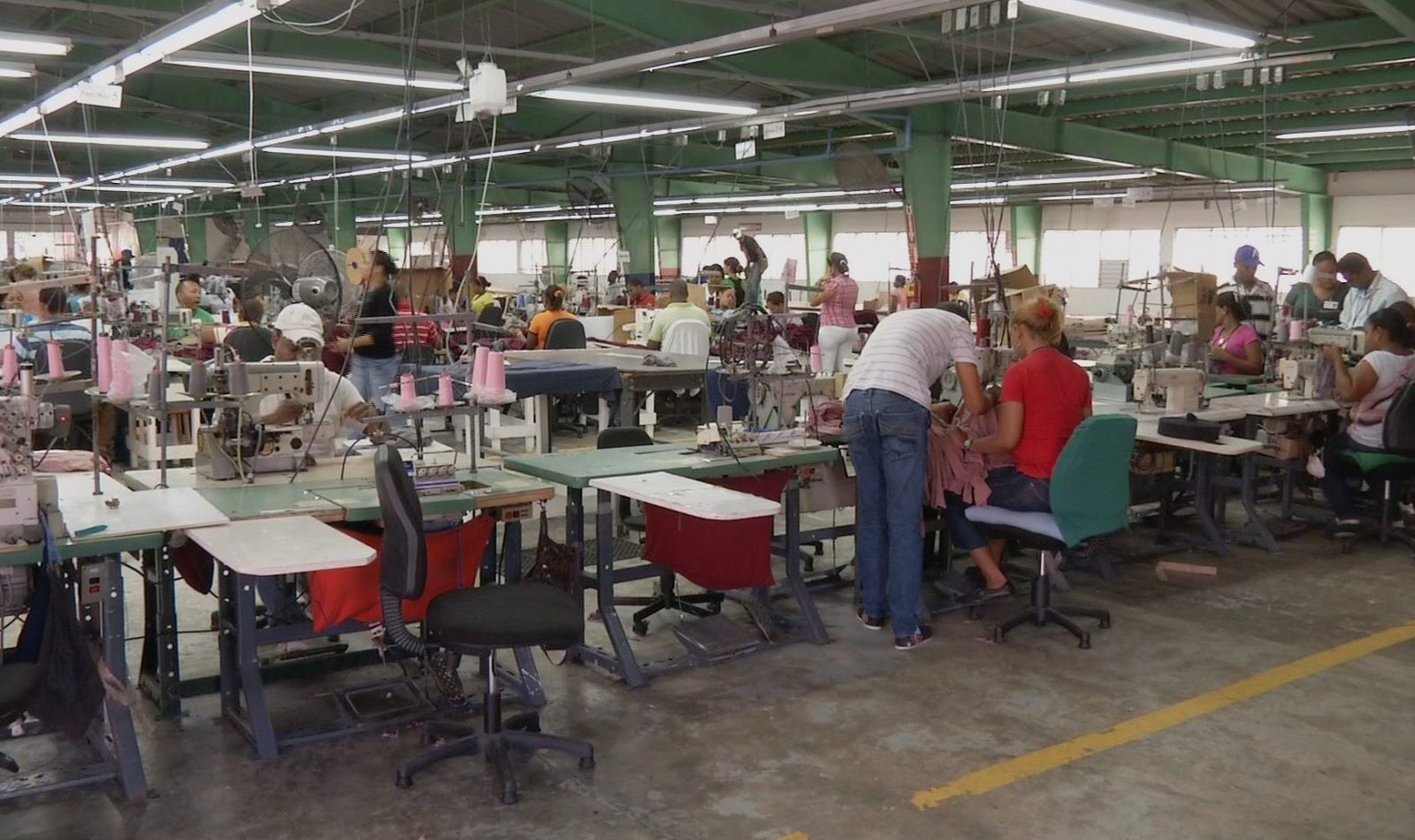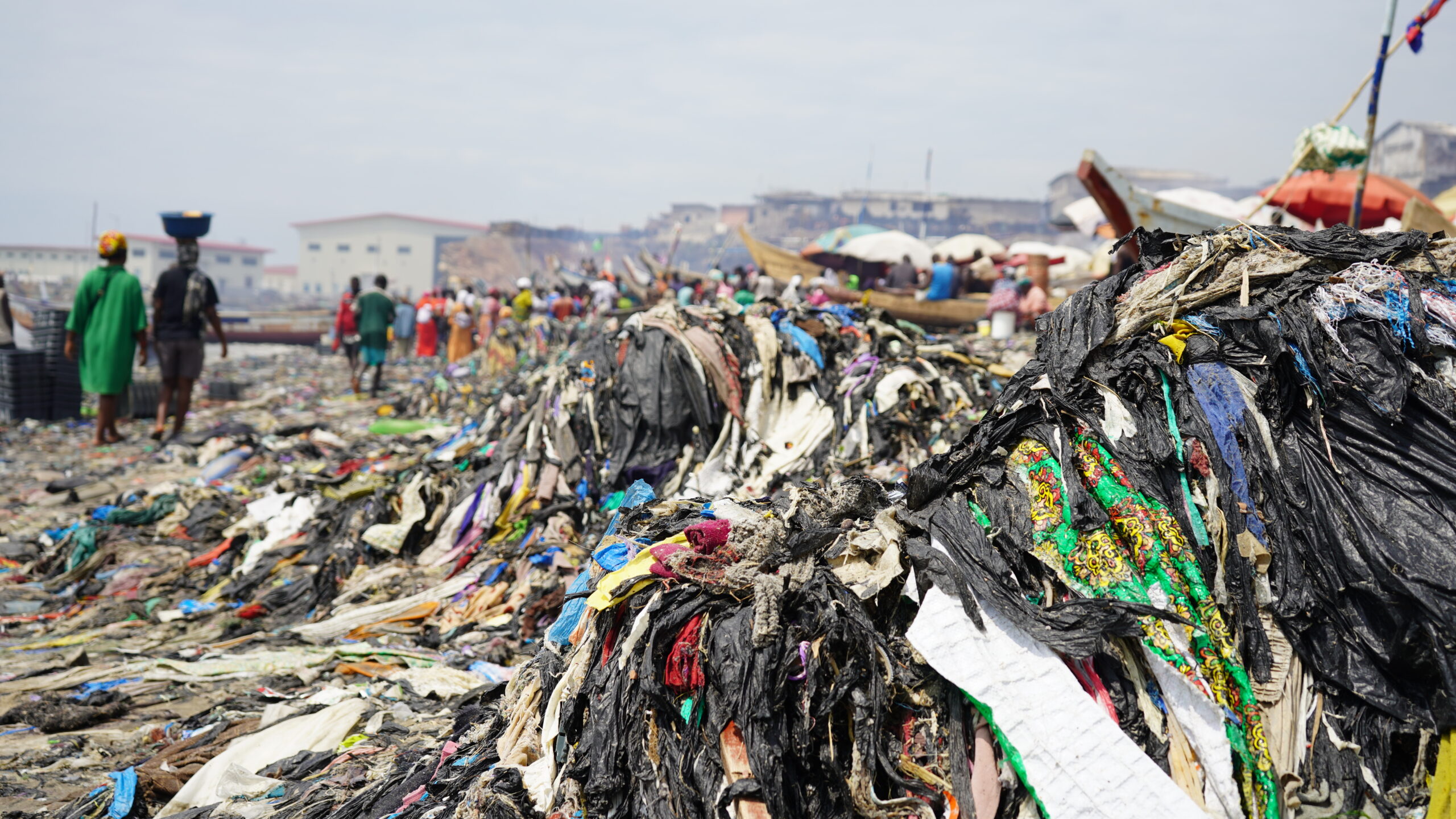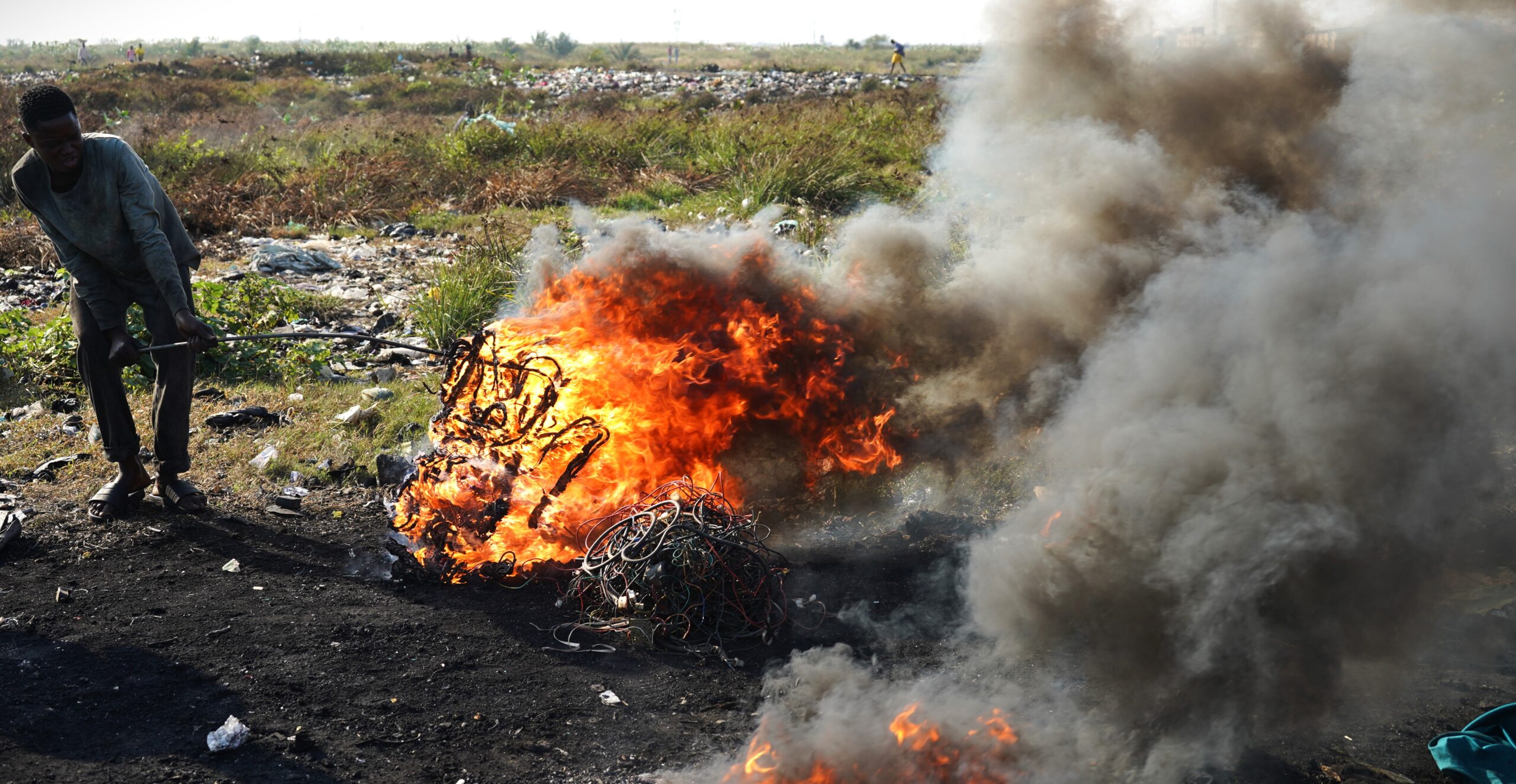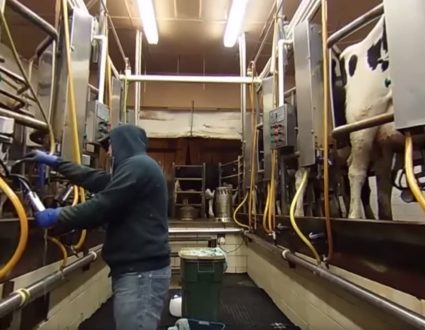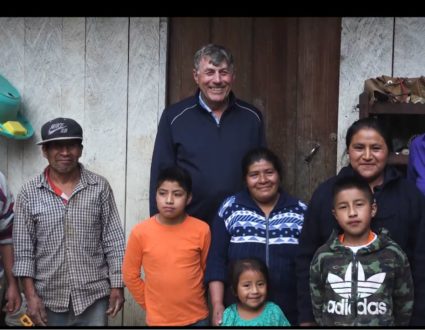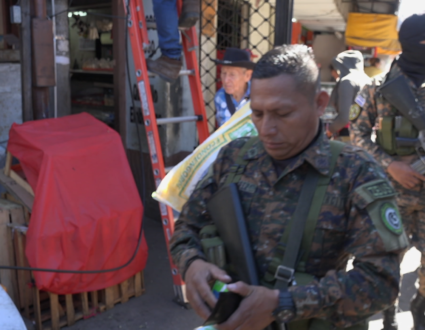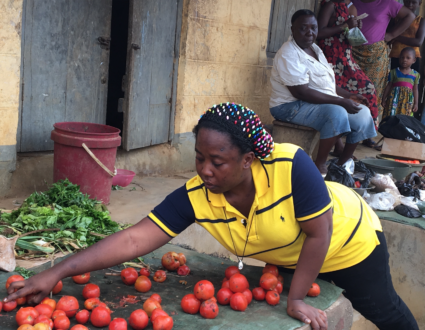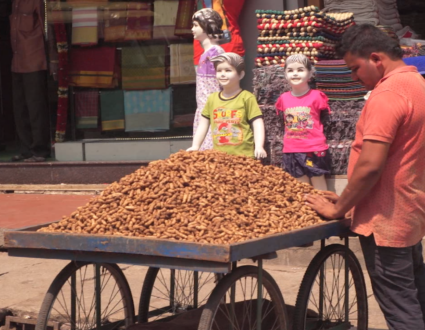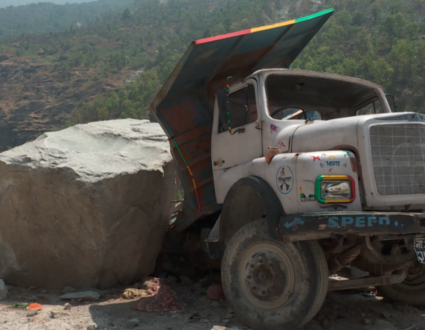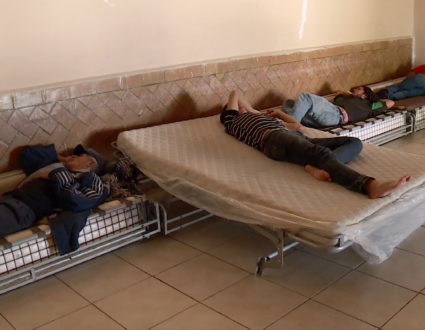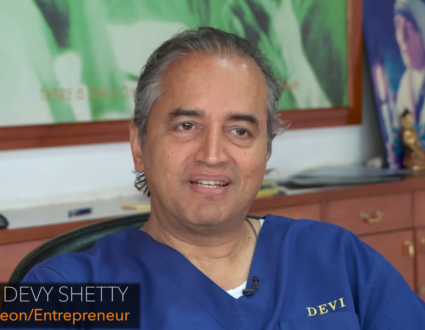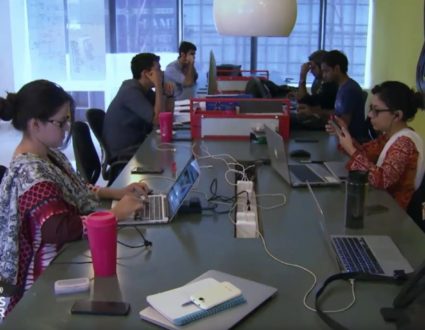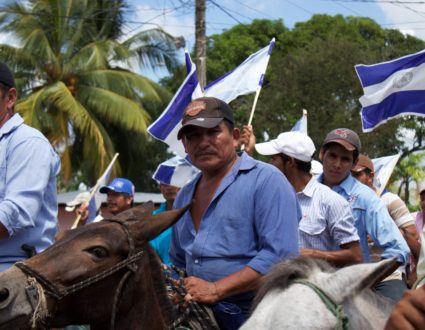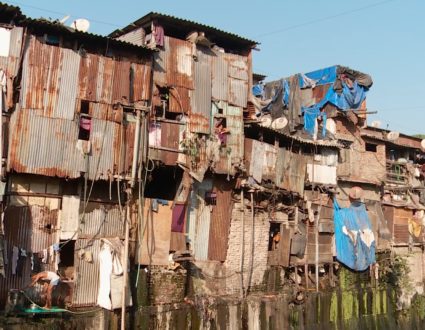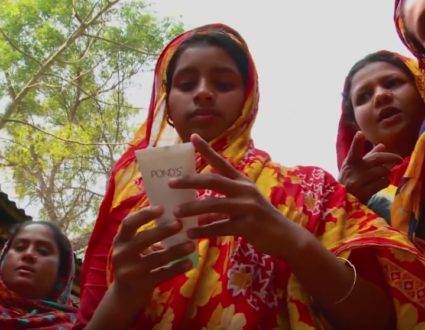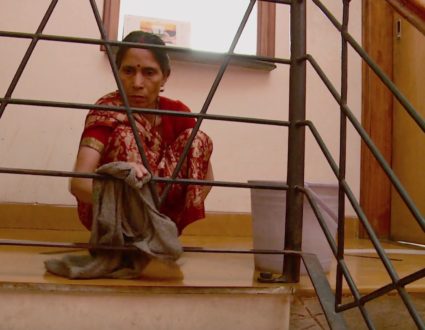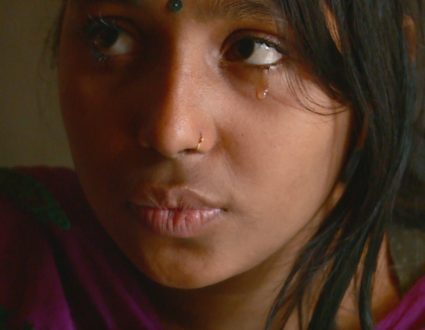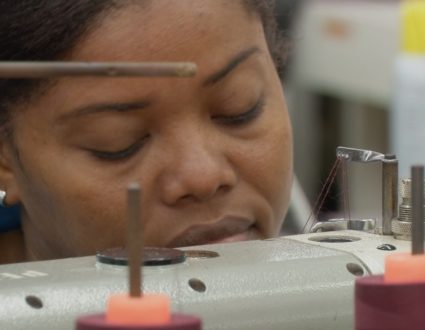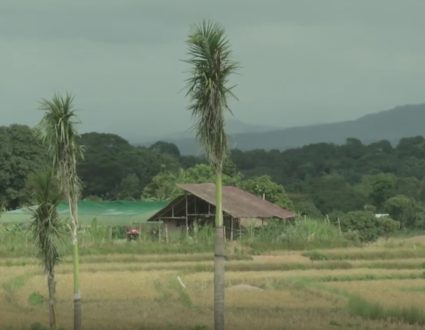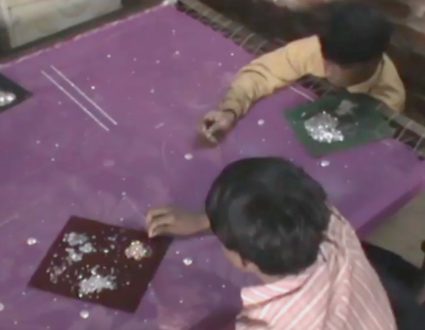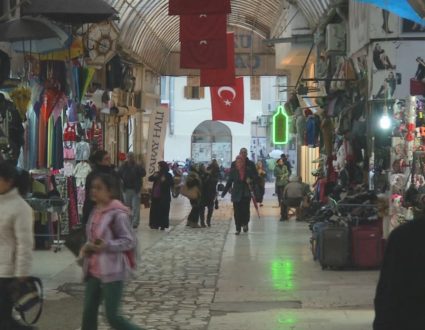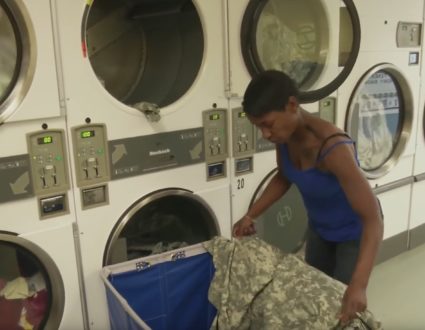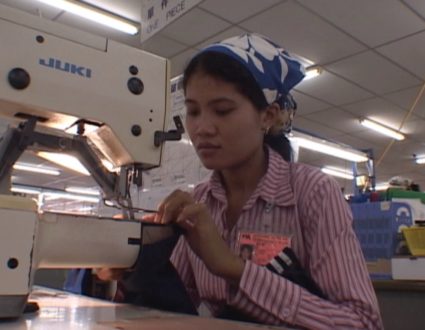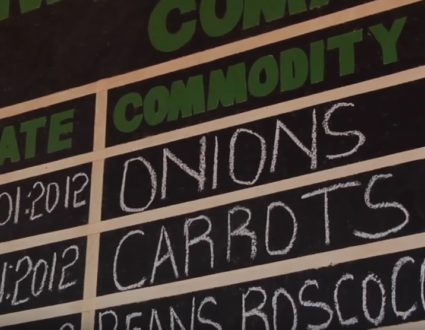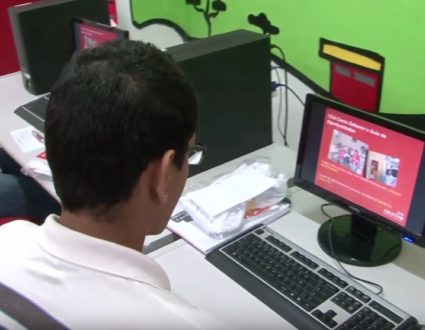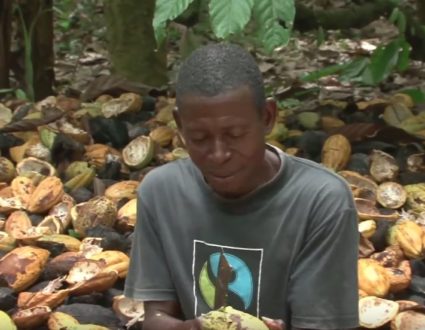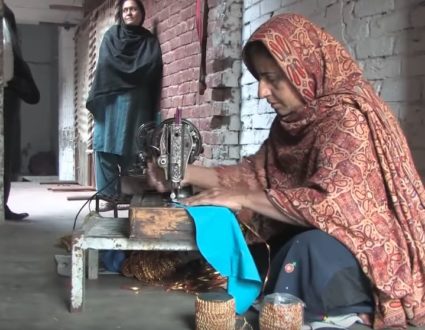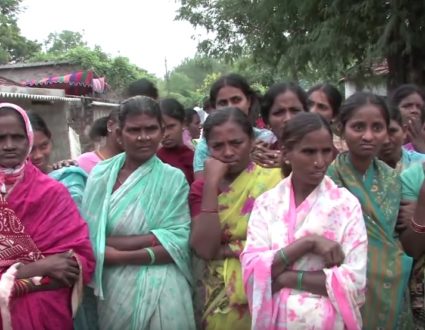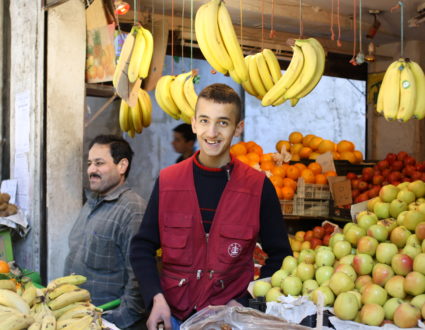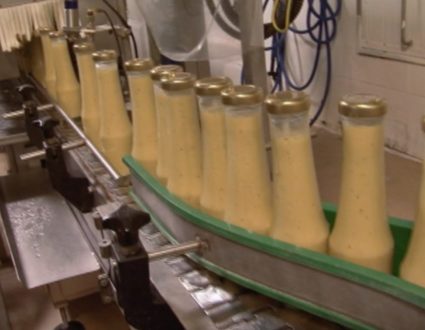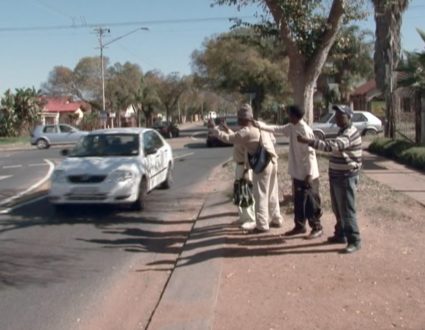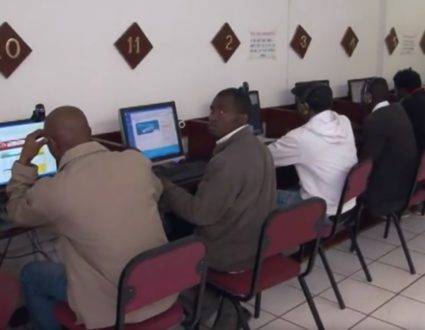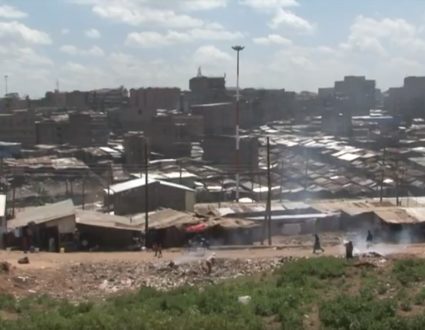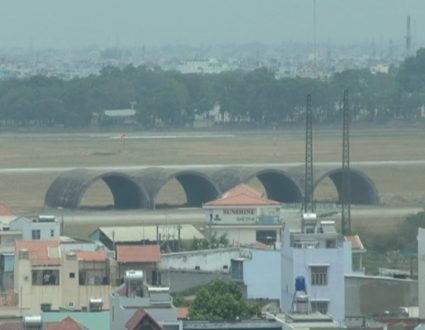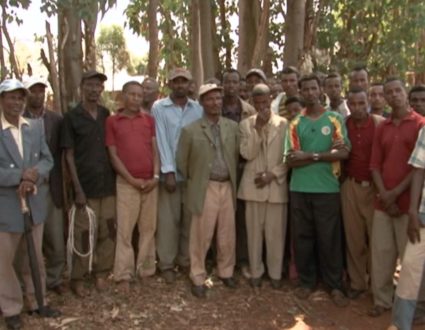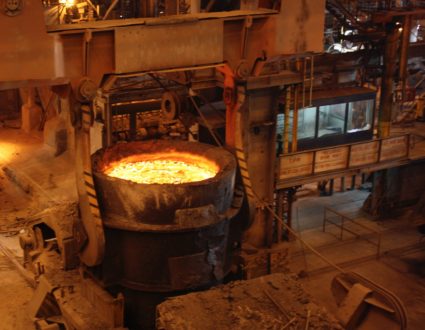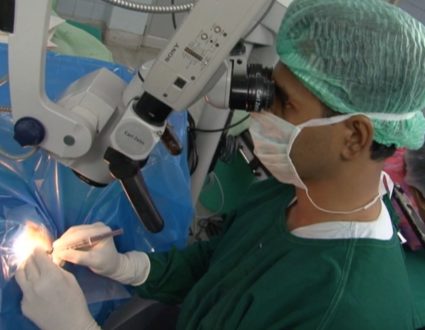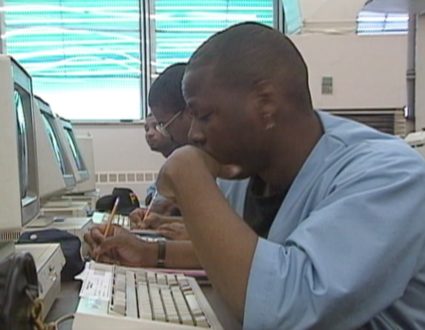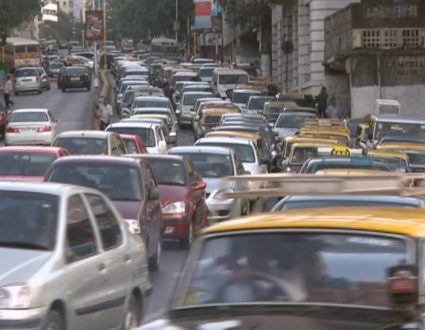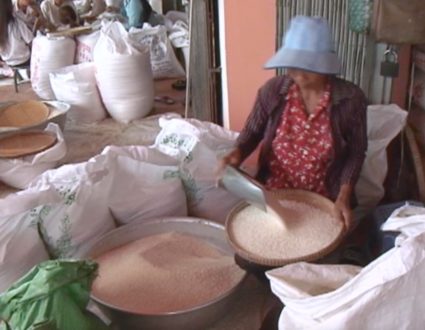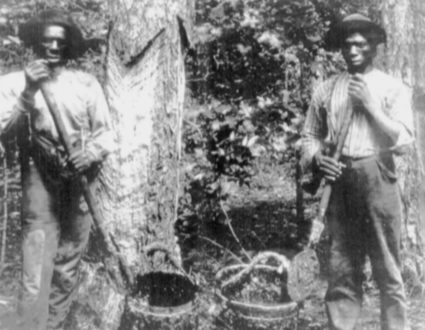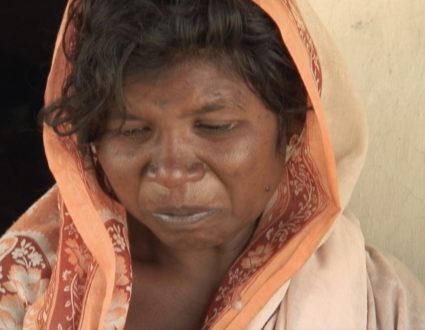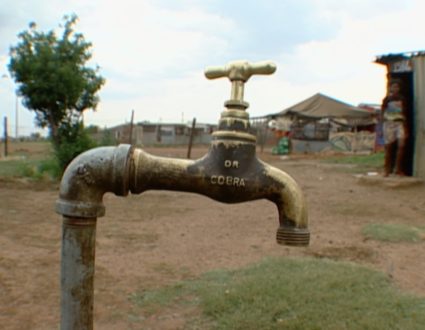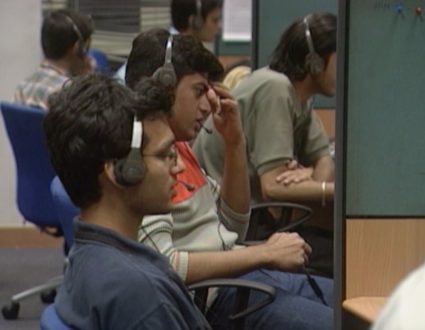JUDY WOODRUFF: Next: A small factory in the Caribbean is trying to buck the trend toward lower wages in the garment industry by making apparel for big athletic programs in the U.S.
Special correspondent Fred de Sam Lazaro has the story. It’s part of his ongoing series Agents for Change.
FRED DE SAM LAZARO: Football is a big money-maker for University of Notre Dame. The storied Fighting Irish name is a lucrative brand in the $4 billion-a-year business of licensed apparel.
In the campus bookstore, one display is trying to stand out in a crowded space.
JOE BOZICH, Founder and CEO, Knights Apparel: Every garment has a hangtag on it, has a picture of one of our employees. One of the hangtags says, “My son goes to school because of these clothes.” Another one might say, “I can afford food, clean water, and medicine for my children when they’re sick because of your purchase of these clothes.”
FRED DE SAM LAZARO: Joe Bozich founded the Knights Apparel company in 2001 and built it into the largest maker of licensed college sportswear.
These shirts are made in a tiny corner of the Knights empire: a factory called Alta Gracia that pays people like Manuel Guzman a living wage. Unusual does not begin to describe the factory where Guzman works in the Dominican Republic, a Caribbean nation of nearly 10 million, where unemployment exceeds 15 percent.
The factory atmosphere is relaxed. The music is loud.
MANUEL GUZMAN (through interpreter): There is no pressure here to produce all the time. People come here to train us. Lawyers have taught us our rights. Also, we have a union that protects us.
FRED DE SAM LAZARO: Maritza Vargas is the union steward.
I asked her, are your wages sufficient?
MARITZA VARGAS (through interpreter): Yes.
FRED DE SAM LAZARO: “Yes,” she responded. They are based on the cost of living for a family of five, calculated by the country’s central bank and adjusted every year for inflation.
MARITZA VARGAS (through interpreter): For me, the most important thing is that my children have been able to go to school. I even have my oldest daughter in college.
FRED DE SAM LAZARO: For Manuel Guzman and his wife, Digna Martinez, his job at Alta Gracia has meant a healthy diet.
DIGNA MARTINEZ (through interpreter): He was jobless for nine months, and we have four kids who don’t understand when you tell them there’s no milk, so it was difficult. This is such a blessing.
FRED DE SAM LAZARO: Another blessing they count on in this home in place of a half-built shack that once was here.
Workers at the Alta Gracia factory earn about $3 an hour. It might not sound like much, but that’s three times the legal minimum wage in the Dominican Republic. And just for comparison, Bangladesh’s government just announced that it plans to raise the minimum wage for its garment workers from about 19 cents an hour to about 34 cents per hour.
All around the Alta Gracia factory are empty buildings, reminders of the daunting global competition. Thousands of jobs have moved to lower-cost countries. Alta Gracia is located in a building that once was a much larger garment factory that employs just 130 workers now, compared to more than 1,000 until 2007, when the building’s previous owner, a South Korea-based company, shut it down.
Alta Gracia itself is running at just 60 percent of capacity. In three years of operation, it has yet to turn a profit. That doesn’t surprise one expert who has studied the plant.
Georgetown University’s John Kline says there have been previous short-lived attempts at living-wage factories.
JOHN KLINE, Georgetown University: They were small. They didn’t have the ability to carry it forward for several years to give it a real test. Joe is big enough with Knights Apparel to back it for long enough to give it a real test.
FRED DE SAM LAZARO: Knights Apparel founder Joe Bozich says he is in it for the long haul. Garment industry wages and working conditions have come under critical scrutiny, especially after the recent series of deadly fires and accidents in Bangladesh. But Bozich created Alta Gracia much earlier, in 2010.
He says a setback in his own health made him especially sympathetic to the plight of garment workers.
JOE BOZICH: Can you imagine what it would be like to know every night that your kids are going to bed hungry? You can only afford one meal a day. I’ve had some experience that made me think about those things in my own life, including my own diagnosis with a disease called multiple sclerosis. And the good news for me was, though, I always had hope.
FRED DE SAM LAZARO: He says there’s growing concern among consumers about conditions in garment factories, and that’s helping the market for ethically produced goods. Alta Gracia apparel is now displayed in more than 800 college bookstores. What we don’t know yet is how it will fare in this competitive space, says Georgetown’s Kline.
JOHN KLINE: A lot of brands are built on reputation by celebrity endorsements. What he’s trying to do is build a brand name that gives him pricing advantages on something else, on good worker conditions.
FRED DE SAM LAZARO: And do you have inkling yet about whether that has cachet?
JOHN KLINE: You certainly have a lot of studies that have been done of what people say: that they will pay more for products that they know are made under good labor conditions. I don’t know that there are convincing studies that people really follow through on this.
FRED DE SAM LAZARO: Our informal survey showed some of the challenges. These freshmen said they were sympathetic to the issue of fair trade and workers’ rights, but not particularly tuned in.
GRACE GUIBERT: It’s not something I’ve really thought about. I mean, I’m always aware that things are made in sweatshops and that it happens, but I never think about it when I’m buying.
FRED DE SAM LAZARO: For others, price is king.
If you saw two T-shirts that were identical, and one said it was made in a living-wage factory and one said nothing, would you pay more for the one that said living-wage factory?
BRI HOUSER: No, I’d probably buy the one that was cheaper.
DAVID SKOCZYN: Yes, probably the cheaper one.
FRED DE SAM LAZARO: Bozich says he’s ready to compete on price, so Alta Gracia’s approach is to not raise its prices or ask for any charity from the consumer, even though higher wages raise its production costs by 20 to 30 percent.
Instead, Bozich is going after more volume sales. Alta Gracia won the bid last year, for example, for 150,000 football-themed shirts sold for a student fund-raiser that helps needy students at Notre Dame.
John Wetzel and Abby Dankoff say it’s a compatible fit.
ABBY DANKOFF: We definitely market the Alta Gracia aspect.
JOHN WETZEL: We do see a lot of people who hear about our cause and then just buy the shirt, and so then if they are able to hear about another cause on top of that, it makes their decision easier.
JOHN KLINE: I would think in the next year or two it will be proven or not proven in the collegiate sector. And I think Joe is already starting to test the waters outside the collegiate sector, and that will be a broader, tougher test.
FRED DE SAM LAZARO: Bozich says high productivity at Alta Gracia and the promise of more business should allow the factory to soon break even.
JOE BOZICH: I think that’s going to transpire in 2014. Recently, the National Hockey League has just made the decision to license Alta Gracia. So we’ll now be able to produce all of the NHL teams in the Alta Gracia factory and bring that to market.
FRED DE SAM LAZARO: Experts say much will depend on consumers, whose behavior can be influenced by factors as varied as a team’s performance or even a news headline from Bangladesh.
JUDY WOODRUFF: Fred’s reporting is a partnership with the Under-Told Stories Project at Saint Mary’s University in Minnesota.
Against the Trend
A small factory in the Caribbean is trying to buck the trend toward lower wages in the garment industry by making apparel for big athletic programs in the U.S.

Ethically Sourced Apparel
The University of Notre Dame sources its apparel through the Alta Gracia garment factory
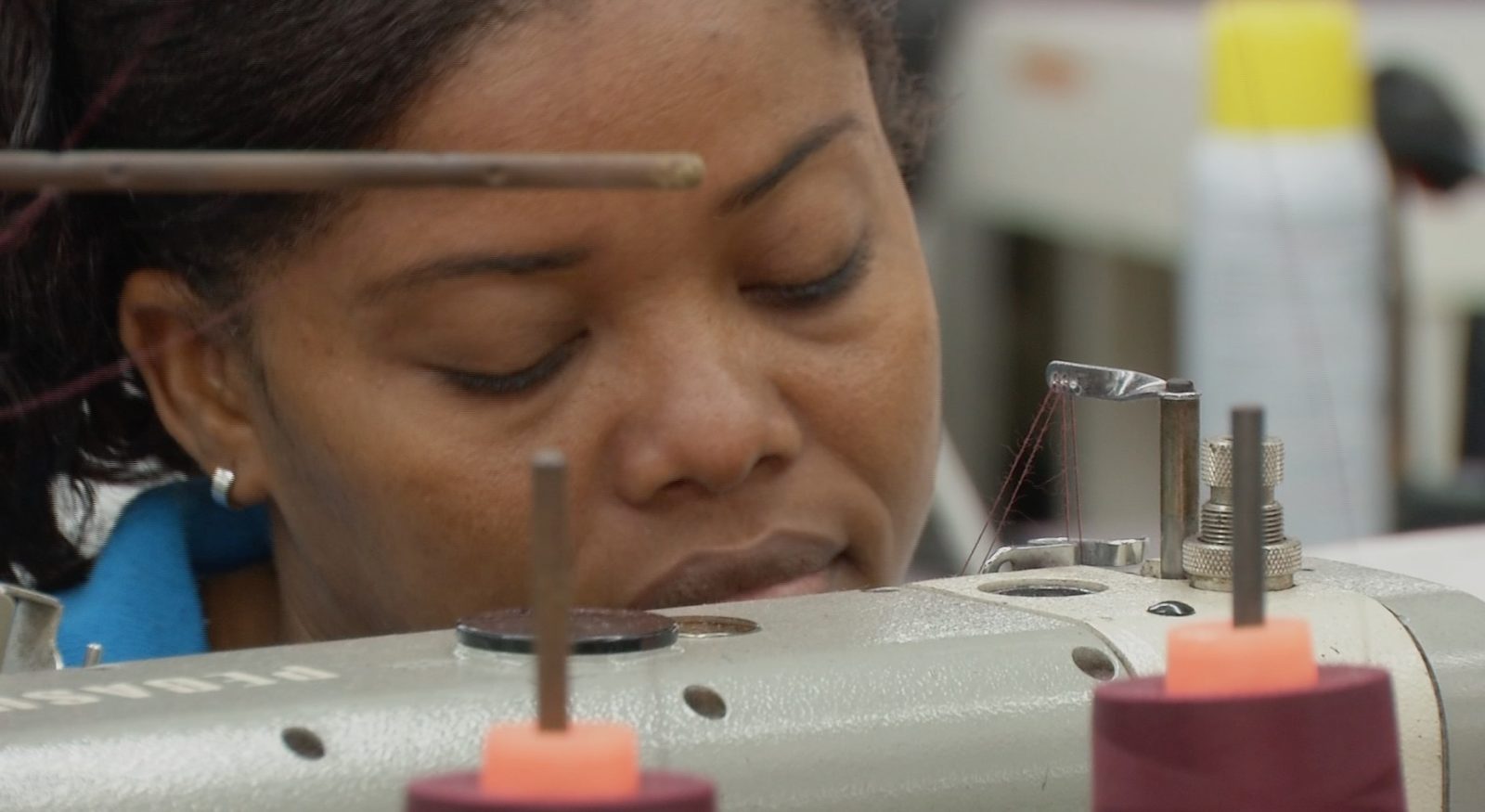
Workers at the Alta Gracia factory earn about $3 an hour
It might not sound like much, but that’s three times the legal minimum wage in the Dominican Republic. And just for comparison, Bangladesh’s government just announced that it plans to raise the minimum wage for its garment workers from about 19 cents an hour to about 34 cents per hour.
